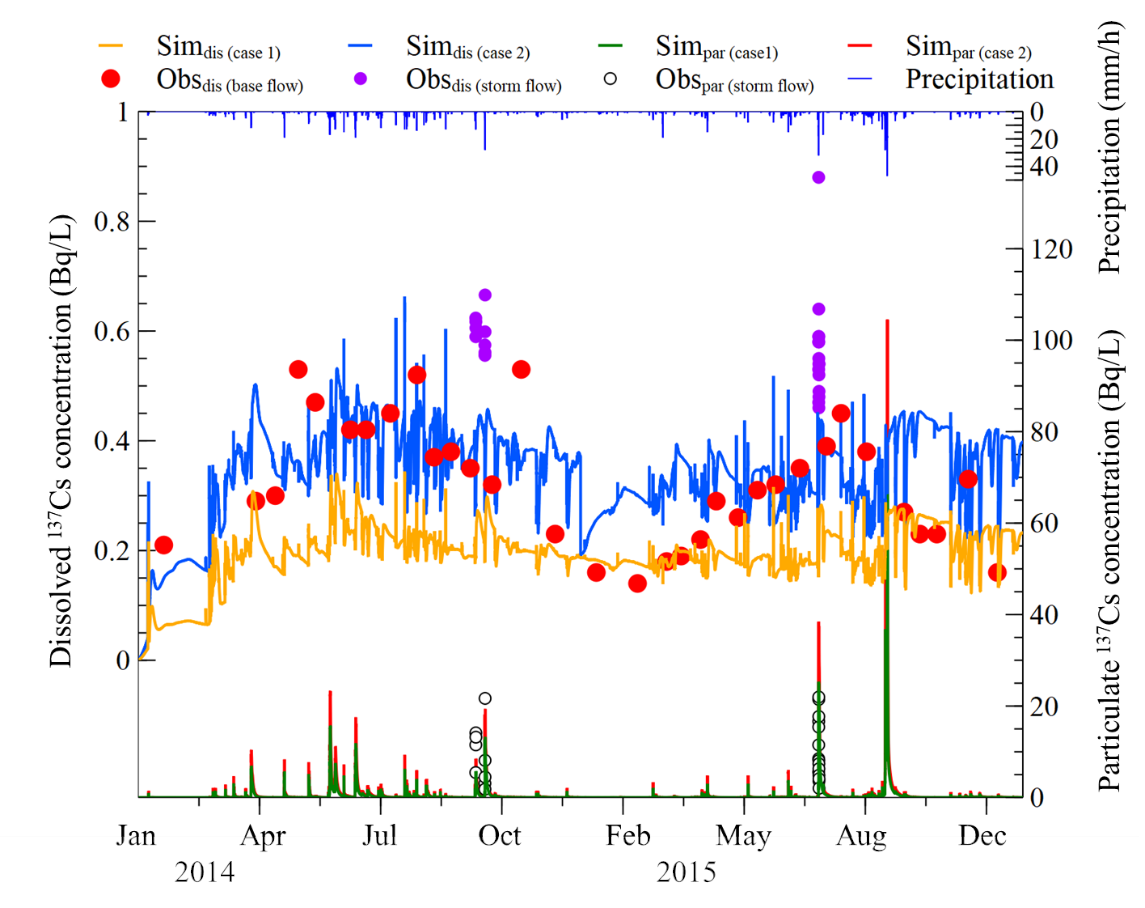Applicability of Kd for modelling dissolved 137Cs concentrations in Fukushima river water: Case study of the upstream Ota River
Published:

Abstract
A study is presented on the applicability of the distribution coefficient (Kd) absorption/desorption model to simulate dissolved 137Cs concentrations in Fukushima river water. The upstream Ota River basin was simulated using GEneral-purpose Terrestrial Fluid-flow Simulator (GETFLOWS) for the period 1 January 2014 to 31 December 2015. Good agreement was obtained between the simulations and observations on water and suspended sediment fluxes, and on particulate bound 137Cs concentrations under both base and high flow conditions. By contrast the measured concentrations of dissolved 137Cs in the river water were much harder to reproduce with the simulations. By tuning the Kd values for large particles, it was possible to reproduce the mean dissolved 137Cs concentrations during base flow periods (observation: 0.32 Bq/L, simulation: 0.36 Bq/L). However neither the seasonal variability in the base flow dissolved 137Cs concentrations (0.14-0.53 Bq/L), nor the peaks in concentration that occurred during storms (0.18–0.88 Bq/L, mean: 0.55 Bq/L), could be reproduced with realistic simulation parameters. These discrepancies may be explained by microbial action and leaching from organic matter in forest litter providing an additional input of dissolved 137Cs to rivers, particularly over summer, and limitations of the Kd absorption/desorption model. It is recommended that future studies investigate these issues in order to improve simulations of dissolved 137Cs concentrations in Fukushima rivers.
K. Sakuma, H. Tsuji, S. Hayashi, H. Funaki, A. Malins, K. Yoshimura, H. Kurikami, A. Kitamura, K. Iijima, M. Hosomi
Journal of Environmental Radioactivity 184-185, 53-62 (2018)
DOI: 10.1016/j.jenvrad.2018.01.001
PDF: download
